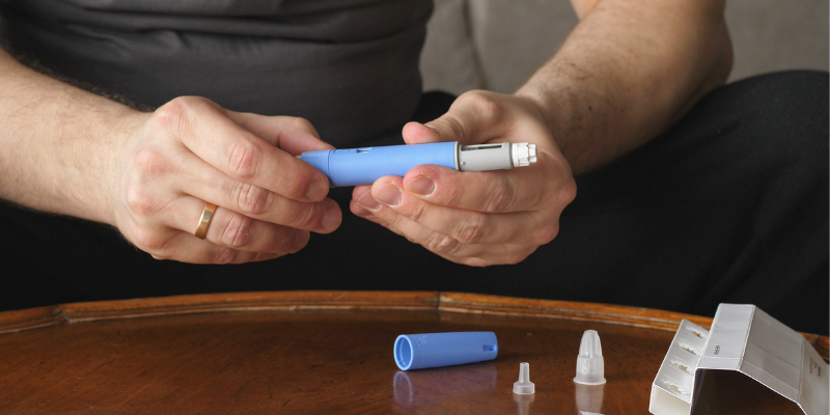How to Check for Thyroid Cancer
- Category: Educational
- Posted On:

September is Thyroid Cancer Awareness Month, and although cancer of the thyroid is rare, it is important to know how to check yourself, just as you would with other types of cancer.
What is thyroid cancer?
Cancer of the thyroid is a cancer that starts in the thyroid gland, which is the butterfly-shaped gland at the base of your neck. The thyroid gland produces hormones that help regulate your metabolism, heart rate, blood pressure and body temperature.
Although it is a rare type of cancer, it affects millions worldwide and often goes undiagnosed. An estimated 500 new cases have been found in Oklahoma this year, according to the American Cancer Society.
The main types of thyroid cancer are differentiated (the most common), medullary, and anaplastic (the most aggressive).
Thyroid cancer symptoms
Early warning signs include:
- A lump or swelling in the neck
- Trouble breathing or swallowing
- Hoarseness or other voice changes
- Pain in the front of the neck
Who is at risk for thyroid cancer?
Thyroid cancer can occur at any age, but women 40-50 years old and men 60-70 years old are most often diagnosed. Women are three times more likely to be diagnosed, or have a type of thyroid disease, according to the American Cancer Society.
Most people who develop cancer of the thyroid do not have an inherited condition or family history of the disease, but several inherited conditions have been linked to different types of thyroid cancer and having a close relative with thyroid cancer increases your risk.
Other risk factors include being overweight or obese, radiation exposure, and diets low in iodine.
How to check for thyroid cancer?
Cancer of the thyroid is treatable when caught early. That is important to perform a neck check on yourself. All you need is a glass of water and a handheld mirror. See the steps below from ThyCa: Thyroid Cancer Survivors’ Association to learn how to perform a neck check.
- Hold the mirror in your hand, focusing on the lower front area of your neck, above the collarbones, and below the voice box (larynx). Your thyroid gland is located in this area of your neck.
- While focusing on this area in the mirror, tip your head back.
- Take a drink of water and swallow.
- As you swallow, look at your neck. Check for any bulges or protrusions in this area when you swallow. Reminder: Don’t confuse the Adam’s apple with the thyroid gland. The thyroid gland is located further down on your neck, closer to the collarbone. You may want to repeat this process several times.
- If you do see any bulges or protrusions in this area, see your physician. You may have an enlarged thyroid gland or a thyroid nodule that should be checked to determine whether further evaluation is needed.
When to see a doctor for thyroid cancer
If you have any signs or symptoms of this type of cancer or if you find any bulges or protrusions during your neck check, schedule an appointment with your primary care physician right away.
From there, your primary care physician will check you themselves and can refer you to local endocrinologists, such as Lubna Mirza, MD, or Tan Pham, MD, at Norman Regional’s Endocrine Center. Tom Connally, MD, surgeon and medical director of Norman Regional’s endocrine surgery program, can then do a biopsy if needed to test if the bulge or protrusion is cancerous.
If you don’t have a primary care physician, call Norman Regional’s Community Call Center at 405-515-5000 to be matched with a provider near you or use our Find a Provider tool on our website.
If you don’t feel comfortable going into the doctor’s office right now, no worries! There is no reason to wait to see a doctor. Norman Regional’s primary care physicians are offering virtual visits. Visit NormanRegional.com/VirtualVisits to learn more.



